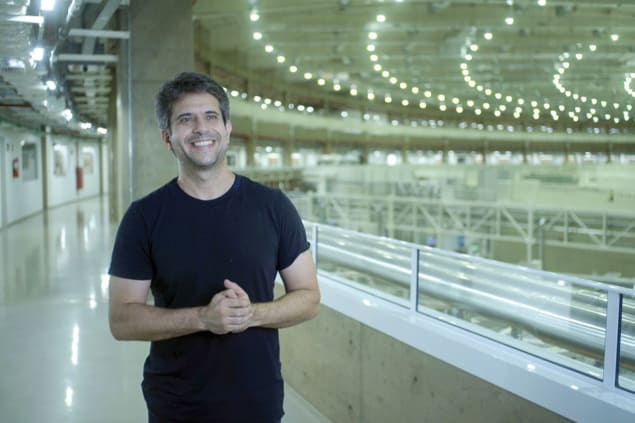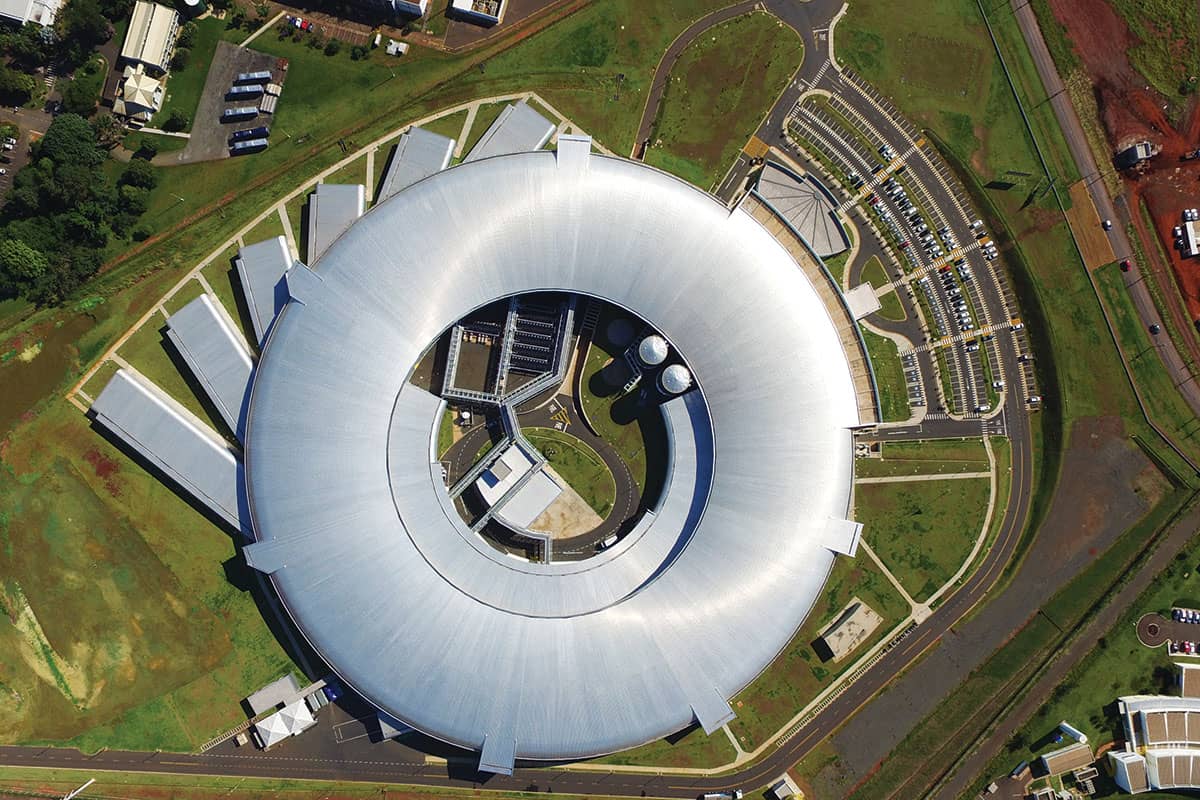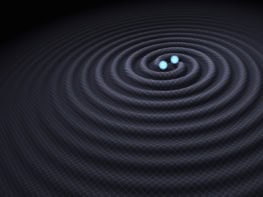In 2020 Sirius, a fourth-generation storage ring light source, was switched on at the Brazilian Synchrotron Light Laboratory. Hamish Johnston speaks to the lab’s director, Harry Westfahl Jr

The past year has been tough because of the pandemic. What progress have you made at Sirius since it started operations?
We have made good progress despite COVID-19 restrictions. The first experiments at Sirius were done on our protein crystallography beamline, which reveals the 3D structures of biomolecules like proteins. It was a study of the maturation process of the main protease of the SARS-CoV-2 virus and is described in a paper published in June 2021 (Journal of Molecular Biology 433 167118).
Sirius is a greenfield machine, so everything is new including the synchrotron and beamlines. We currently have six beamlines in an advanced stage of installation and commissioning. At the moment about 50% of the time is spent on beamline commissioning while the other half is spent on commissioning the storage ring and its accelerators. In a year, we have increased the electron current in the storage ring from 10 mA to 70 mA. The aim is to get this up to 350 mA in the near future, but this will require the installation of a special device.
Can you tell us something about Sirius’ beamlines and the research that will be done on them?
Our beamlines are named after Brazilian flora and fauna. We like to divide the beamlines into scientific research themes, which are biological and soft matter; hard condensed matter; and what we call heterogeneous and hierarchical matter. However, I should emphasize that all our beamlines are multipurpose and can be used across a range of scientific disciplines.
In the biological and soft matter theme, Manacá is a structural biology beamline for protein crystallography, which is where the SARS-CoV-2 study was done. This is complemented by Sapucaia, which is a small-angle scattering beamline, and Cedro, which is a UV beamline dedicated to circular dichroism measurements. We also have the Imbuia beamline, which is devoted to infrared imaging and spectroscopy on nanometre and micron-length scales. Currently being commissioned, Cateretê is designed to do coherent diffraction imaging of cells and tissues, among other things.
Which beamlines focus on hard condensed matter?
We have four beamlines. Ema will be used to study material properties under extreme conditions of pressure, temperature and magnetic fields. The Sabiá beamline will allow us to study the magnetic properties of samples at the nanometre scale. Inelastic soft X-ray scattering will be done on the Ipê beamline, and this will allow scientists to study excitations in materials. Finally, Sapê will probe the band structure of materials using angle-resolved photoemission spectroscopy.
What do you mean by heterogeneous and hierarchical matter, and how will it be studied?
These are materials and systems with properties related to their intrinsic heterogeneous structures. This can include soils, catalysts, batteries and solar cells. To study these structures we have Mongo, which is a high-energy tomography beamline that provides a 3D overview of heterogeneities. We have Carnaúba, which is an X-ray nanoprobe beamline that will also provide 3D images of materials. Both beamlines create images that can zoom in an out between the nanometre and micron length scales.
Paineira is an X-ray powder diffraction beamline that is optimized for studying polycrystalline materials such as ceramics and pharmaceuticals. Jatobá will be used to study non-crystalline materials using a technique called pair distribution function or PDF. These two beamlines will provide structural information about samples on intermediate length scales.
Finally in this theme we have the time-resolved X-ray absorption spectroscopy beamline, Quati. This will provide high-resolution temporal and spatial information about heterogeneous materials.

How is the beamline installation and commissioning progressing?
Different beamlines are at different stages and good progress is being made with their installation and commissioning.
As well as our success with Manacá, we have had the first images from Cateretê. Scientists using Ema have done our first high pressure diffraction studies of materials that change their structure under extreme conditions. Carnaúba has also delivered its first scanning X-ray fluorescence image using a sub-micron beam. By early 2022 we expect to have about nine beamlines installed and in different stages of commissioning.
You and your colleagues got Sirius up and running in the middle of a global pandemic. Was that difficult?
Yes, the installation and commissioning of the storage ring and beamlines during the pandemic was a unique challenge. Much of the work was done remotely because we could only have a third of our staff on site. Indeed, most of our staff are still working remotely. The big challenge has been assembling and commissioning equipment because this typically requires different teams working together in the same space. This has delayed the process, as has problems in the supply chain. Even though most of our components were produced in Brazil, we still relied on international suppliers who were also affected by the pandemic.
A non-pandemic problem that we have faced recently is budgetary restrictions. Science is currently having a difficult time for funding in Brazil, which has also caused delays.
But despite these challenges, we have been able to install and commission Sirius and get our first users into the facility.
Sirius is one of the first fourth-generation storage rings in the world and is the only synchrotron currently operating in Latin America.
Is the facility primarily for Brazilian science, or do you see it as an international facility that will benefit science in the Americas and beyond?
Sirius is definitely an international facility, much like our first synchrotron UVX – which operated in 1997–2019. While about 80% of the scientists using UVX were Brazilian, the remaining 20% were mostly from other Latin American countries, especially Argentina. So, like UVX, I think Sirius will be a great opportunity for science in Latin America.
I think Sirius will be a great opportunity for science in Latin America
Another international dimension to our research is the collaborations we have with synchrotrons and user communities around the world. For example, we have very good interactions with the Canadian Light Source (CLS) in terms of a joint programme for agricultural and soil research. In the future we expect to be able train scientists in the use of both Sirius and CLS.
I believe that more agreements like this will come in a future. The reality is that there are few synchrotrons in the world, so they tend to be international facilities. That is what we hope for Sirius.
What is next for Sirius, and indeed the Brazilian Synchrotron Light Laboratory in general? Are there plans for any new facilities such as an X-ray free electron laser (XFEL)?
In the short term we plan to increase the number of beamlines at Sirius and also develop accelerator technologies such as insertion devices, which will allow us to perform more challenging experiments.
We also plan to create complex infrastructure at Sirius that will expand the type of experiments that we can do. One example is to create beamlines with high levels of biosafety – up to the highest level, four. This will allow us to do a broad range of biological sciences with colleagues at the Brazilian Biosciences National Laboratory, which is also on the CNPEM campus in Campinas.
In the midterm, there is still a great deal of room for upgrading the Sirius storage ring and improve its emittance. We have plans for evolving the current synchrotron and our accelerator tests facilities.
Looking further in the future, yes, we are considering an XFEL as a possibility. The technology is developing rapidly, and it is definitely something to be considered in the future of CNPEM.



